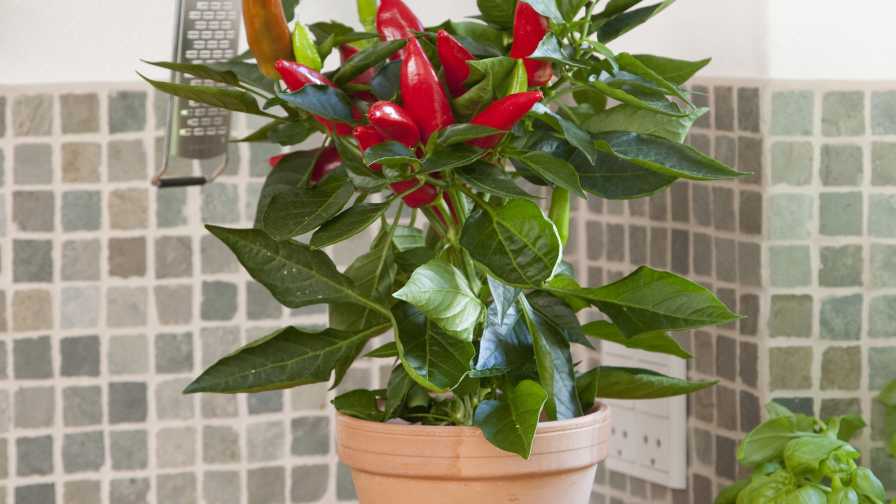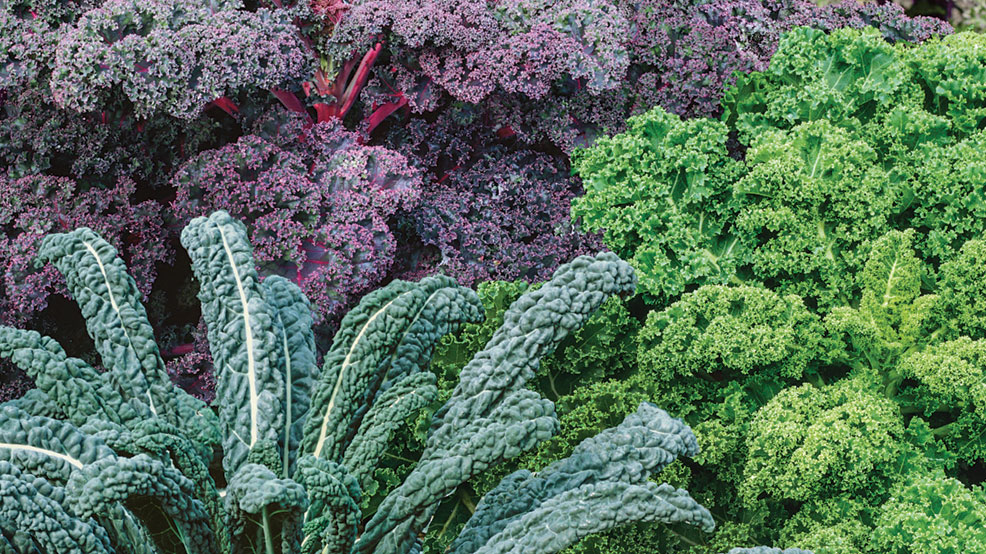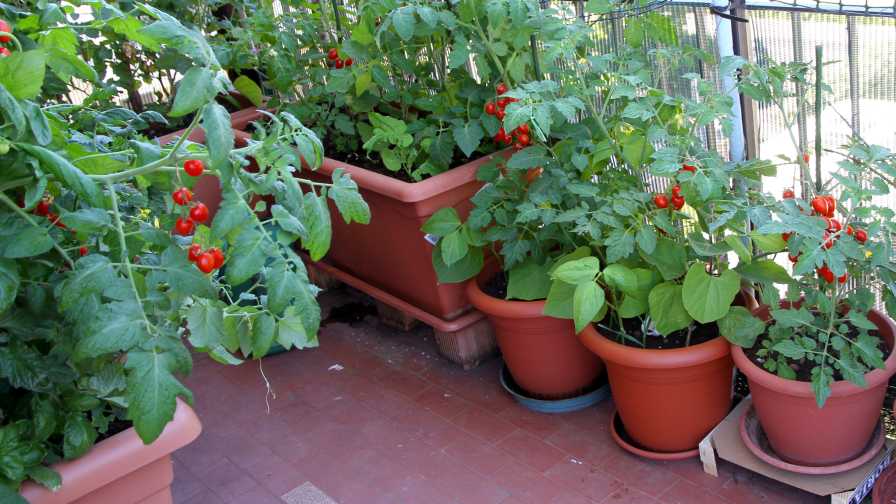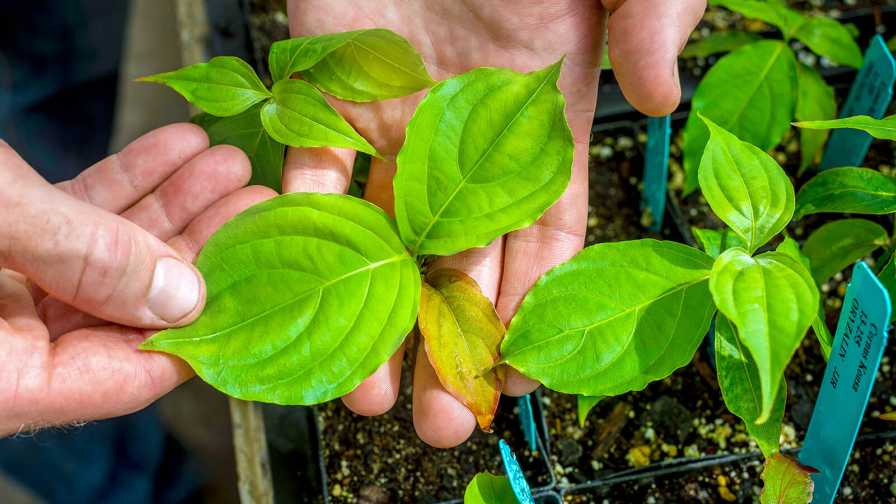6 Trends Shaping the Home Vegetable Garden Market

ne trend in home vegetable gardening is that “different” is now normal. A striped tomato or an odd-looking hot pepper is no longer weird. In fact, with social media providing an opportunity to pictorially share gardening successes, oftentimes, the weirder the better.
Photo courtesy of PanAmerican Seed
It seems like everyone wants to try their hand at home vegetable gardening right now. After all, in uncertain times such as the coronavirus lockdown we’ve all experienced this year, people yearn for a sense of security and control in their lives. Growing something that can feed them, even if on a very small scale, can oftentimes fit the bill.
Add in the large amount of time we are spending at home, and it seems like a logical explanation of why people are choosing to grow their own vegetables. We reached out to a number of breeders and suppliers and asked them what growers looking to capitalize on this trend need to know. Here’s what they had to say.
1. Container Gardening Reshaping Plants … Literally!
One trend that pretty much every home garden vegetable provider has homed in on is patio gardening, which had already been rising in popularity even before the coronavirus pandemic pushed more people to grow their own food.
“Consumers are looking for dwarf plants that take up minimal space or can be grown vertically while also yielding well,” says Kendall Brittingham, Marketing Manager with Harris Seeds’ GardenTrends division. “People want to bring the garden indoors, so plants that can handle lower light conditions and grow well in small pots work best.”
Other traits consumers desire in this category, Brittingham says, are low maintenance, disease resistance, and plants that can double as ornamentals.
“These are becoming popular as table toppers,” Brittingham says.
Gillian Kelly, Trials Manager and Assistance Product Manager at Harris Seeds, says the process for bringing a new variety to the market usually takes about eight to 10 years, which means breeders and developers are always having to look ahead of trends.
“I think this demand we are seeing for bringing the garden closer to our kitchen has been a trend for a while, and breeders have taken notice,” Kelly says. “We are seeing a lot of exciting new varieties in the pipeline that have potential to excel indoors and in small-space gardening.”
2. Tools to Help Retailers Advise Consumers
People may be excited about cooking with recipes using fresh, home-grown flavors, but when it comes to knowing which vegetables grow best in containers, too many of them don’t understand the difference between determinate and indeterminate tomatoes, or the trouble that can cause if chosen incorrectly. According to Jayson Force, Product Manager for Burpee’s retail plant brand, retailers can help gardeners be successful by suggesting the varieties that do well in containers versus the ones that do better planted in the garden — and even those that do well in a hanging basket.
“Burpee’s research into the shopping experience has helped us update plant tags to give the consumer the details they need to make good decisions on plants that fit their gardening lifestyle,” Force says.
These color-coded tags are designed to make it easier for grower-retailers to group similar crops on a rack or bench, while highlighting traits such as color and flavor.
“It’s all part of our continuous efforts to listen to growers, retailers, and consumers about what makes it easier for them at the point where our product meets the consumer,” Force says.

Kale is one of the most popular new vegetable crops, and it can be easily produced in its own garden. Photo courtesy of Nova/Floragraphics
3. Grow-Your-Own-Food Gets Easier and Healthier
The resurgence in home vegetable gardening is also marked by two necessities, according to Patty Buskirk, Owner of Seeds by Design: dependability and sustainability. The ideal home vegetable varieties, she says, are the ones that work in all regions, yet are also unique.
“Gardening is hard work and takes time and commitment, and products that are easy to grow and cook tend to be the most popular,” Buskirk says. “Plus, everyone likes a story, and plants that can tell a tale of uniqueness, flavor, heirloom, and some other specialty can provide this story.”
Buskirk says this trend should only continue in the wake of COVID-19.
“Prior to the pandemic, many people may have loved the idea of growing their own food, but never had the time,” she says. “But once bitten by the gardening bug, many will continue with it, so I think this increase in gardening and food awareness will continue for the future.”
4. Appealing to the Nurturing Nature
A number of today’s vegetable gardeners are in their 40s, and when you ask Jeanine Standard with Proven Winners, she says that’s because gardening can bring out a nurturing instinct for those who may have children who have left for college.
“Also, when there’s a scare like what’s happening now with COVID-19, people like to go back to what they can nurture and do with their hands,” Standard says. “People are largely staying at home right now, but they want to stay busy.” Standard also points out the similar success that other categories are having, such as baking ingredients and pet care.
The launch of a range of novelty plants at Proven Winners, including ‘Amazel’ basil and a series of Buried Treasure flowering strawberries that grow well in containers, has been met with strong demand, Standard says.
“We’re seeing a very high percentage of growth in this category,” Standard says. “It’s beyond anything we ever expected.”

Consumers are looking for dwarf plants that take up minimal space or can be grown vertically, while also yielding well.
Photo courtesy of Harris Seeds
5. Consider Consumer Income
This was an unusual spring season, according to Jeanine Bogard, Business Lead – Home and Garden Vegetables at Syngenta, because if a plant had a vegetable or herb label on it, it sold. Looking to 2021, however, it will be important for growers to pay attention to economic indicators in their region.
“If unemployment rates continue to soar, large high-priced veggie containers may not be financially feasible to your consumer base,” she says. “Make sure what is offered is affordable or there is a range of price points to shop from. A struggling family may not be able to purchase a single pot at $20, but are willing to spend that same amount on an assortment of smaller pots and packs that will round out their food options to feed the family.
6. Education Can Come in Many Forms
With many new gardeners growing vegetables and herbs for the first time, Josh Kirschenbaum, Sales Account Manager – Vegetables for PanAmerican Seed, says it is critical for growers and grower-retailers to educate their customer as much as possible, so they will be successful and consequently want to garden in future years. This can be done through electronic mailings, classes (virtual or in-person), or help lines.
On top of this, Kirschenbaum says, it is important to have options for those who want to grow in-ground and those who want to grow in patio containers.
“Growers and grower-retailers can (and should) use their suppliers as a resource to make sure the products they are offering, such as our Kitchen Minis program, meet these specifications,” he says. “It also might be helpful to walk the talk by having an onsite garden or containers of veggies that can be used for trialing and create a way to engage customers.”










